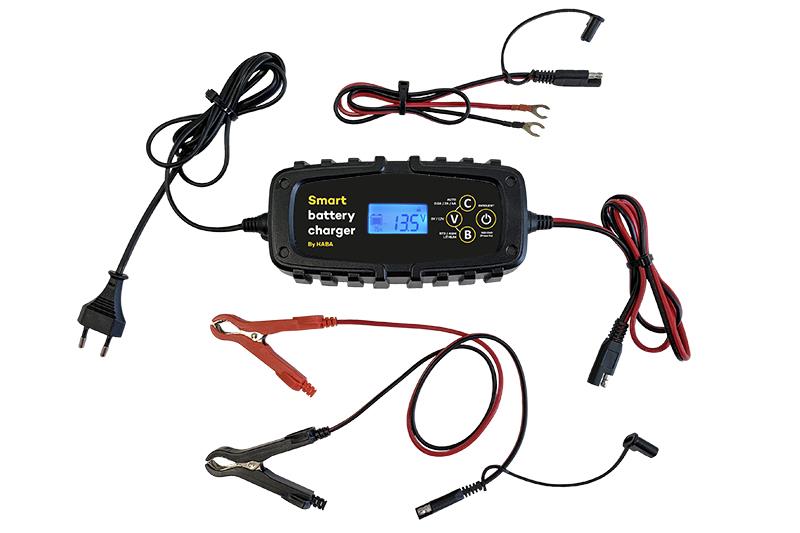
The difference between the two pulse modes is mainly reflected in different control methods during the charging process. The current pulse and voltage pulse are the two types of pulse modes. Then, it was extended to the Li-ion battery technique. Ī pulsed current charging technique was previously proposed to improve the cycle life of lead-acid batteries. This method was further studied and proved to reduce the charging time, maximum temperature rising, and prolong the cycle life. Compared to the CC-CV strategy, the lifetime, charging speed, charging capacity were improved by 16.1%, 17%, and 1.3%, and the rising temperature also dropped by 2 ∘C. A Sinusoidal Ripple Current (SRC) charging strategy was proposed to improve the overall performances for Li-ion batteries. To improve the charging speed, a MCC-CV based on an Integer Linear Programming (ILP) algorithm charging strategy was proposed, which can seek for the optimal charging current profile for Li-ion batteries. In, the author developed a Multi-Stage Constant Current-Constant Voltage (MCC-CV) charging mode to reduce the capacity fading. A Multi-Stage Constant Current (MCC) charging strategy was designed to improve the charging speed and efficiency. The CC-CV strategy is usually a reference to evaluate the proposed novel charging strategy. The cycle life and safety issues also need to be considered when the temperature rises to a higher level. Therefore, the balance between the charging speed and temperature rising still needs to be investigated and optimized. The CV mode that normally follows the CC mode can limit the overvoltage stress on the battery cells and can improve the charging capacity while resulting in a longer charging time. Moreover, the cycle life is affected negatively by the rising high temperature. Thus, the safety during the charging process needs to be carefully considered due to the potential for thermal runaway and explosion caused by high-temperature operation. The charging time of Level 3 is only about 15–30 minutes, while the temperature rises higher than that of Level 1 and Level 2. Level 3 is for fast charging where high currents, up to 10 C, are applied. Level 2 is applied with a higher input power and the corresponding charging time is 2–6 h. Level 1 is the lowest power level where the charging time is normally above 10 h.

However, if the constant charging current is below 0.5 C, the charging time can be increased significantly. The CC charging is more suitable for slow charging with a 0.5 C-rate (C) and a typical charging time of 2 h. The current decreases until the end of charge current I E O C to prevent damage to the battery.
LITHIUM BATTERY PULSE CHARGER FULL
When the voltage reaches the switch voltage V s w, which is a predefined voltage that is very close to the full charge voltage V f u l l, the CV stage starts. At the first stage, the battery is charged using a constant current I c h a. There are two charging stages for the CC-CV charging strategy, as shown in Figure 2. With the combination of the CC mode and CV mode, the Constant Current-Constant Voltage (CC-CV) charging strategy was proposed and regarded as a practical method to charge batteries due to the simple implementation.

The Constant Current (CC) charging strategy and Constant Voltage (CV) charging strategy are the two simple charging modes. The L i + ions are extracted from the positive electrode and intercalated to the negative electrode. The schematic of a Li-ion battery cell during the charging process is presented in Figure 1. The weight of these impact factors on lifetime, charging speed, charging/discharging capacity, and the temperature rising of batteries is presented, which provides guidance to design advanced charging/discharging strategies as well as to determine future research gaps. Then the main impact factors of the PPC strategy and the NPC strategy are analyzed and discussed. An overview of the impact of pulsed current techniques on the performance of Li-ion batteries is presented. This paper summarizes the existing pulsed current modes, which are positive Pulsed Current Mode (PPC) and its five extended modes, and Negative Pulsed Current (NPC) mode and its three extended modes. However, the impact of the pulsed current parameters (i.e., frequency, duty cycle, and magnitude) on characteristics of Li-ion batteries has not been fully understood yet. The pulsed current charging technique is expected to improve the lifetime, charging speed, charging/discharging capacity, and the temperature rising of Li-ion batteries. However, there are still issues, which have to be solved, related to the fast-charging capability of EVs.

Lithium-ion (Li-ion) batteries have been competitive in Electric Vehicles (EVs) due to their high energy density and long lifetime.


 0 kommentar(er)
0 kommentar(er)
